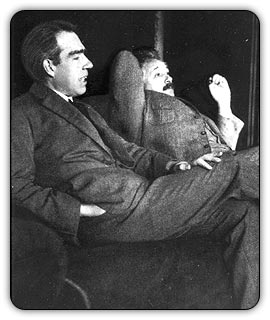After a few headaches reading Realists’ and Antirealists’ version of perception, the only way for us is to answer…
What shall we trust now?
Well, someone can think that if the existence of the moon is directly related to our action as observers, we perfectly could build a device (a camera for example) to observe the moon “without” observe it. Or we can think that if the moon doesn’t exist if we don’t look at it, why everybody sees it at the same place at the same time? Or more simple, we can think that almost always is someone looking at the moon, so it shouldn’t stop its existence ah?
If we think like a philosophical scientist, we can answer this kind of questions as follows: we can have in our human nature, in our mind, some kind of ideas like the sky is blue as default. And we can live our lives, doing and thinking everything keeping that on mind: with we all agree that sky is blue (even without knowing our daltonism), ergo we agree that the sea is blue and we now when it’s midday or evening, cloudy or sunny, winter or summer.
Analogously, we can have something called moon in our mind, it’s perfectly possible, that we could have a reference in the sky, maybe a representation of an internal clock , why not, and we can see how the time is going on during the night or during a month. Maybe we have involved this useful “defect” or “fault” of our mind’s way of perception in the construction of all our devices like cameras. And in this way, all human beings are ‘programmed’ to see the moon at the same place at the same time like all the people in one place agree that the sky is blue in that moment.
So…Enough, what the hell is the trick in all this business??! Did the whole universe begin to exist with the considered first human being appeared? Can we apply this moon’s thing to all things?? If all things are made of parts we cannot see like the atoms, can we say that something exists?
In my opinion, we live in a epistemological reality, our mind, and the connection of all minds through communication has built these reality we accept with a moon, a coffee and and a car. All we obtain is information from an external agent, and the only thing we can do is deal with that information, in the same way that we cannot really know if we call blue to the same colour. And what about the quantum physics? Well, we cannot see an object atom by atom, with our eyes naked, and each atom is almost empty, but we can see the object because we can see a macroscopical feature of such a big group of microscopical things.
Quantum physics appeared to explain a microscopical reality in a way we could understand the experimental data, based in the fact that we need to interact with something to know its properties and it’s very problematic in that scale, we try to fix a car with a tool of a car’s size, so maybe is nonsense trying to extract a philosophy from here, although the physical theory is right until now. In the same way we can solve problems thinking that the earth is flat, because it’s what we feel locally, but in a big scale we need something more that the Newton’s laws.
In other words, too much philosophy for a pragmatic theory.
Ezequiel López López
(Source: Does the moon exists when nobody is looking at it? – Ray Bradley)

